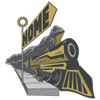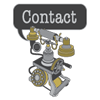
Tuesday, September 29. 2009
CallerID for Windows Fax Service
Having recently configured fax sending/receiving on both a Windows server (using Windows Fax Services on SBS2003) and a Linux server (using Hylafax on Debian Lenny), I felt compelled to write down a few troubleshooting steps for fixing Caller ID problems. Both of these systems include Caller ID information with received faxes (separate from any TSID), but often this information is missing and it is difficult to determine why. Make sure that each of the following items are satisfied:
- Does the phone line to which the fax is connected have Caller ID service from the phone company? (easy to test using a Caller ID-capable phone)
- Does the modem support Caller ID? (check the specs, or skip to the next step)
- Is Caller ID enabled in the modem? Is it being received? To test this, use the following steps:
- Stop the fax service
- Connect to the modem using Hyper Terminal, telnet, or cu
- Query the status of Caller ID on the modem using
AT#CID?(or a different modem-specific command). If the modem reports 0 (disabled), enable it withAT#CID=1and add this to the modem initialization string so it will be enabled after reboot/reconnect. - While still connected to the modem, make a call to the phone line and watch for Caller ID information to be printed. If no Caller ID information is printed, continue troubleshooting the modem/phone until the information is printed.
- Disconnect from the modem when finished and restart the fax service
Once the items above are satisfied, the Caller ID information should be gathered by the fax service and included with received faxes. If not, check that the initialization commands include enabling Caller ID, if it is disabled by default (try restarting the fax service, then step 3 from above. If the Caller ID is disabled, something in the fax service is disabling it - or not enabling it). Otherwise, something else is broken and you should add a comment below on how to fix it.







